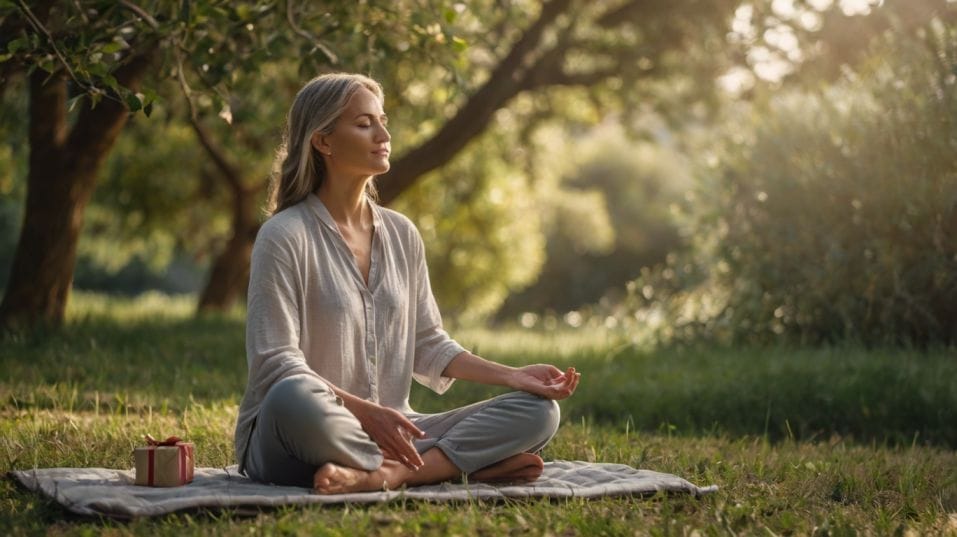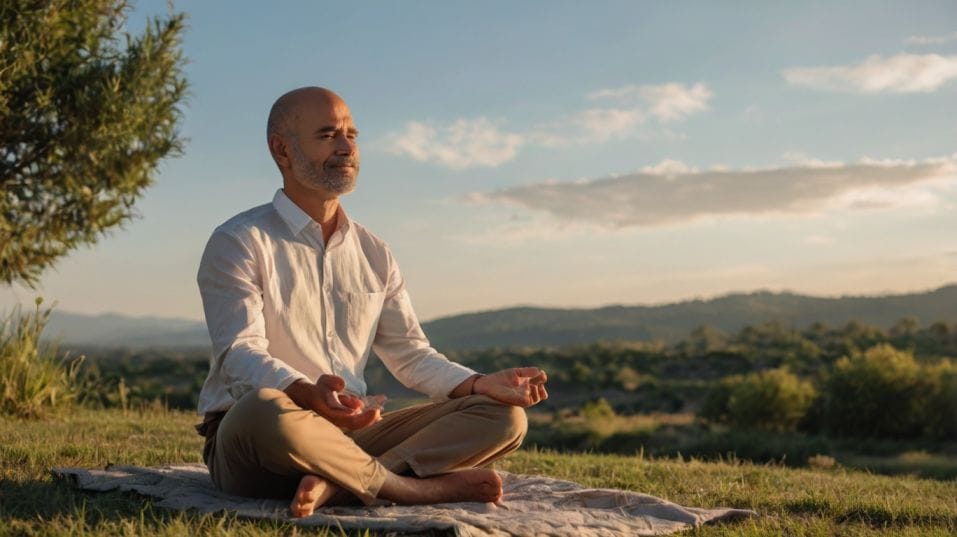How to Cultivate a More Present and Fulfilling Life
Learn to live more fully in the present. Discover mindful practices to enhance daily experiences, reduce stress, and improve well-being.

Are you truly present, or just coasting through your days? The endless pings, back-to-back meetings, and constant demands can leave you feeling disconnected.
But what if you could sharpen your focus, find more meaning in your work, and experience life more vividly—without adding to your to-do list? Mindful living isn’t about doing more.
It’s about fully engaging with what’s already here. A small shift in awareness can transform how you think, work, and connect.
The Science of Presence
Mindfulness isn't just a wellness buzzword. Studies reveal that it lowers stress, improves emotional resilience, and enhances cognitive function.
Practicing presence strengthens neural pathways responsible for focus and contentment, making you more attuned to life’s moments rather than lost in regrets or worries.
Training your mind to stay present cultivates appreciation for everyday experiences, improving mental clarity and overall well-being.
The key isn’t doing more—it’s experiencing more. When you actively engage with your surroundings, your relationships deepen, your work becomes more fulfilling, and your daily routine transforms into a source of meaning rather than monotony.

The Neuroscience Behind Mindfulness
Your brain thrives on mindfulness. Studies using fMRI scans show that consistent mindfulness practice strengthens the prefrontal cortex, the area responsible for decision-making and focus.
Simultaneously, it reduces activity in the amygdala, the brain's fear center, which means less reactivity to stress. Over time, this shift rewires your brain, making you naturally more present, resilient, and emotionally balanced.
Living Mindfully in Everyday Life
Mindfulness isn’t about perfection. It’s about making small, intentional choices that anchor you in the now. Here’s how you can integrate it seamlessly into your routine:
Begin the Day With Awareness
What you do first thing in the morning sets the stage for everything that follows. Instead of grabbing your phone, take a breath.
Stretch. Notice how your body feels. Set a simple intention to stay present. A mindful start creates a ripple effect throughout the day. Experiment with mindful breathing exercises before getting out of bed.
A few deep inhales and slow exhales help activate the parasympathetic nervous system, reducing cortisol levels and preventing stress from taking over before your day even begins.
Engage Fully in Routine Activities
Your daily habits hold hidden opportunities for mindfulness. Feel the warmth of the water in the shower.
Savor the taste of your coffee instead of gulping it down. Walk with awareness of each step. The more you immerse yourself in these moments, the richer they become.
Try practicing "micro-mindfulness"—short bursts of presence throughout the day. While washing dishes, notice the temperature of the water, the motion of your hands, and the scent of the soap.
When commuting, take a break from scrolling and simply observe the world around you. These moments, though small, cultivate a habit of mindful awareness.
Focus on One Task at a Time
Multitasking scatters attention and fuels mental fatigue. Close unnecessary tabs. Put your phone away during conversations.
Fully commit to the task at hand. Single-tasking increases efficiency while reducing stress, allowing you to engage deeply with what truly matters.
If you struggle with distractions, try the Pomodoro Technique—working in focused sprints with intentional breaks.
During each work session, commit to a single task without interruptions. Over time, this trains your brain to resist the urge to switch between tasks and strengthens your attention span.
Shift Your Perspective With Gratitude
Presence and gratitude go hand in hand. When you appreciate what’s in front of you, your mind stops searching for what’s missing.
Take a moment to acknowledge small joys—a kind message, a quiet sunset, a shared laugh. The more you notice, the more abundant life feels.
Journaling can amplify this effect. At the end of the day, write down three meaningful moments, no matter how small.
Maybe it was the warmth of your pet curled up beside you or a stranger’s unexpected kindness. By shifting your focus to appreciation, you retrain your brain to find joy in the present.
Create Space for Stillness
Mindfulness isn’t just about doing—it’s about being. Pause between meetings. Take a deep breath before responding in a conversation.
Allow silence to exist without filling it with noise. These small pockets of stillness reset your nervous system and deepen your connection to the present.
Meditation is a powerful tool for this. Even five minutes of deep breathing or body scanning before bed can promote better sleep and mental clarity.
If sitting still feels challenging, try a walking meditation—move slowly, paying attention to each step and the sensations in your body.
Deepen Your Relationships With Mindful Communication
Being present extends beyond solo moments—it transforms your interactions. When speaking with someone, give them your full attention.
Listen without formulating a response in your mind. Observe their body language and emotions. A mindful conversation fosters genuine connection and reduces misunderstandings.
Try active listening. Instead of waiting for your turn to speak, reflect back what the other person is saying. This small shift makes conversations more meaningful and helps strengthen relationships, whether in personal or professional settings.
Reduce Digital Overload
Technology is one of the biggest obstacles to mindfulness. Constant notifications, emails, and social media pull attention away from the present.
Establish boundaries to regain control of your focus. Set app limits, designate screen-free hours, or try a digital detox on weekends.
Even simple habits—like keeping your phone out of reach during meals—can help you engage more deeply with the moment.
Final Thoughts
Mindful living is about showing up for your own life, moment by moment. It’s not about rigid rules or unattainable ideals—it’s about making small shifts that bring clarity, calm, and joy.
The best part? You can start right now. Choose one habit to integrate today and see how it changes your experience of the present moment.
Begin with something simple: Savor your next meal, take a deep breath before a meeting, or step outside and feel the air on your skin. These moments add up, shaping a life that is not just busy, but deeply lived.




